Until Khuri, Jaisalmer had been the most laid back city we had visited in India. Lori and I had endured nearly a month of crazy, frenetic Indian cities and were overdue for a long-awaited break from people — the constant crush of humanity — animals, and the belching and rip-roaring machines that permeate every square inch of walking space.
We loved our time in Jaisalmer and Jodhpur, but the desert beckoned. The lure of quiet evenings in a sleepy village with clean air and clear, starry nights commandeered our waking thoughts and when the time came to board a rickety rust-bucket west, we were ready.
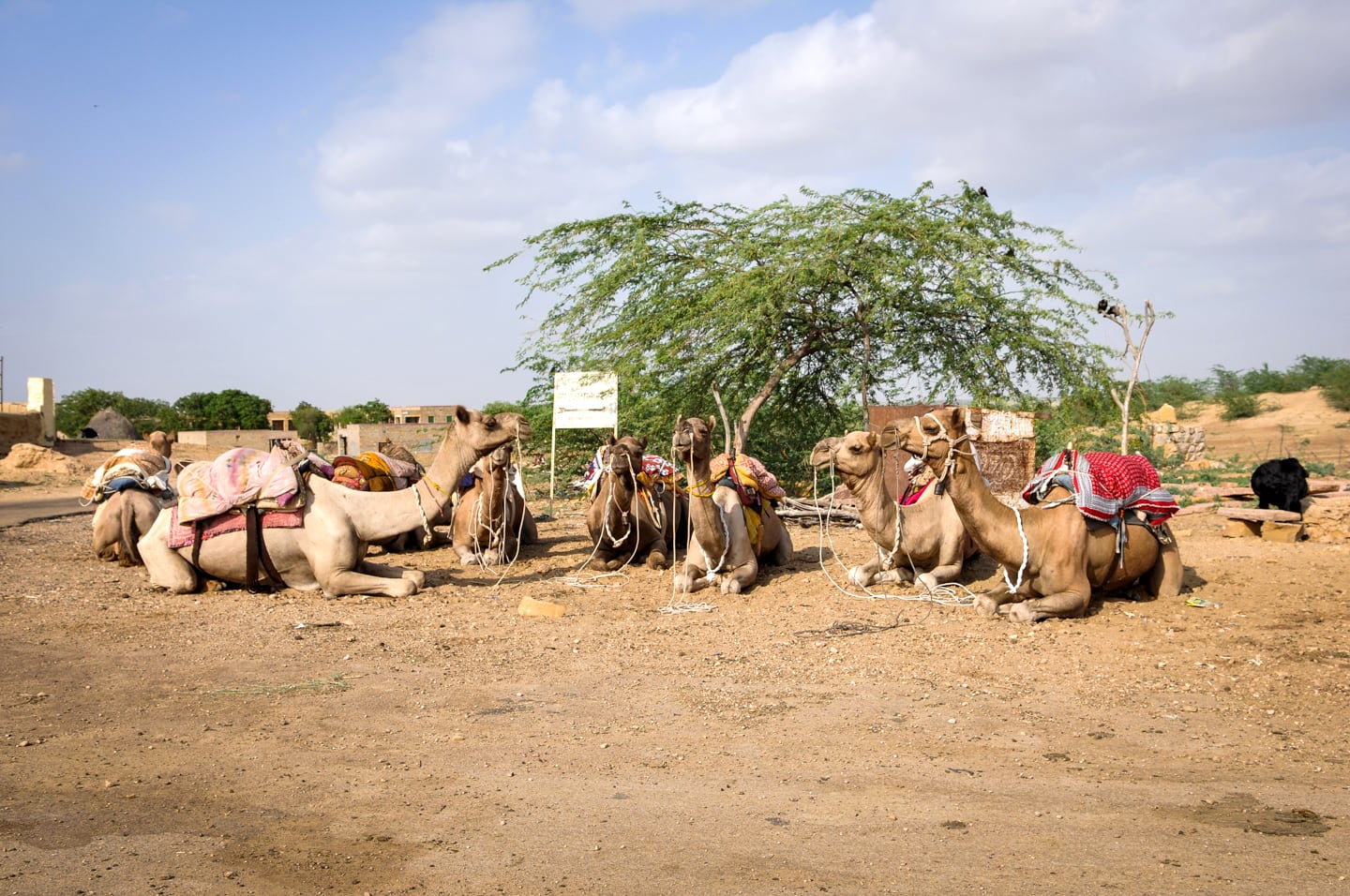
We were given some good advice from the folks at Hotel Renuka to take a tuk tuk out to the bus station terminal to assure that we get seats. At the time, we didn’t quite understand the value of such advice. That would come later. Funny thing was that no one seemed to know quite where this bus terminal was located or whether it even existed. For years travel agents had been pointing people in the direction of nearby Hanuman Circle, but with the completion of the new terminal, there was wide disagreement as to whether the bus stopped at the Circle. The prevailing wisdom in India, however, was that when catching a bus, one should try to get it as close to the source as possible, where ever that may be. After asking about a dozen people and getting a half dozen different answers we decided there was only one type of person who would know the real answer.
We left our big packs in a locked storage room at Ratan Palace/Hotel Renuka and with overnight gear in hand, we headed to the main road and started flagging down Auto-Rickshaws (tuk-tuks). Surely, they would know the answer to the bus mystery.
Now, it’s worth mentioning that in India, people in general rarely give a straight answer — yes or no is not in the vocabulary — and this is especially true for Auto drivers. In other countries, tuk-tuk or taxi drivers will basically nod enthusiastically to your every question having never really listened to it in the first place: Do you know where hotel fill-in-the-blank is? “YES-YES-YES!” Do you know where the national museum is? “YES-YES-OF-COURSE-YES!” How about the Lost City of Atlantis, Arc of the Covenant or my great-great-grandmother’s cousin’s favorite dog’s birth village? “YES-YES-YES!!!” In India, however, each question — regardless of the answer — is met with the same grin and indecipherable head wobble that can be taken to mean anything you want it to mean.
So back to our Auto driver. We ask our question, our man slips us the ol’ head wobble and off we go away from town — 10 minutes out of town in fact — past grassland which then quickly turns to sandy desert. Where is this guy taking us? Did he understand? Hopefully he didn’t think we were asking HIM to drive us all the way to our destination 40km out. But sometimes you just got to trust the head wobble, and before we knew it, we were pulling up to a newly constructed bus terminal out in the middle of nowhere. We paid the kind sir for his services and he pointed in the direction of one of three identically dilapidated hulks sitting on an otherwise empty tarmac.
Two things here that baffle me (and there are MANY in India, but we’ll focus on just two here):
1) Without fail, every time we exit a tuk tuk at the bus station, there seems to be at least one tuk tuk driver yelling RICKSHAW!? WHERE YOU GO! RICKSHAW!? as we are STEPPING OUT OF A RICKSHAW. Not only are we leaving a perfectly good rickshaw, but we are AT A BUS STATION. Please tell me, what are the odds that we would actually need ANOTHER RICKSHAW at this exact point in time? But this happens so often, it’s gone from being frustrating to extremely humorous.
2) Why would anyone build the bus station so far — not only from town but from the main highway, or any hint of civilization. I’m aware of many growing cities moving bus stations outside of town to alleviate congestion, but this is Jaisalmer, a city which reached its peak in the 14th century and is surrounded entirely by desert!
We boarded our bus (we were the second couple there) and waited in the heat for about 20 minutes. When the bus finally left, it left about half full, usually meaning the driver was going to have to prowl around town for another 20 minutes for anyone going our direction, but this would prove unnecessary. Shortly after leaving the station we were back in town taking on twice the number of passengers such a bus was ever built to hold — and, squished tightly into the seats we had worked so hard for, with people on our laps and butts in Lori’s face (she had the aisle seat) we were off to Khuri!

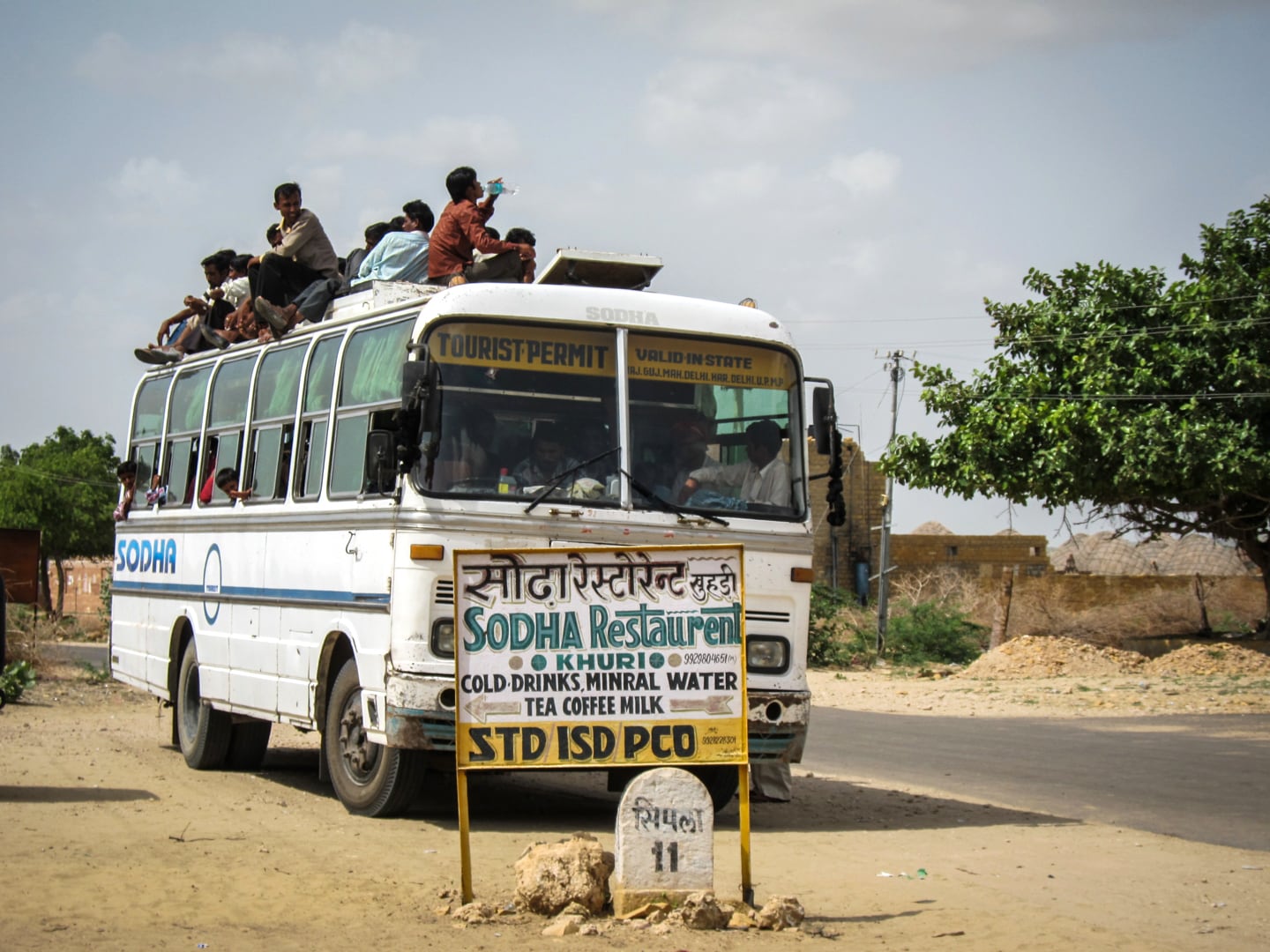
Khuri
There isn’t much going on in Khuri these days. Then again, I’m not convinced anything much has ever gone on in Khuri. It’s a pleasant village about 30 miles southwest of Jaisalmer near the Pakistan border. We hear that once a year (in November perhaps?) they have camel races which draw crowds from all over the region. When we first heard of this we had a hearty laugh…that is until we found ourselves holding on for dear life to a galloping camel at full bore a day later, but we’ll get to that shortly.
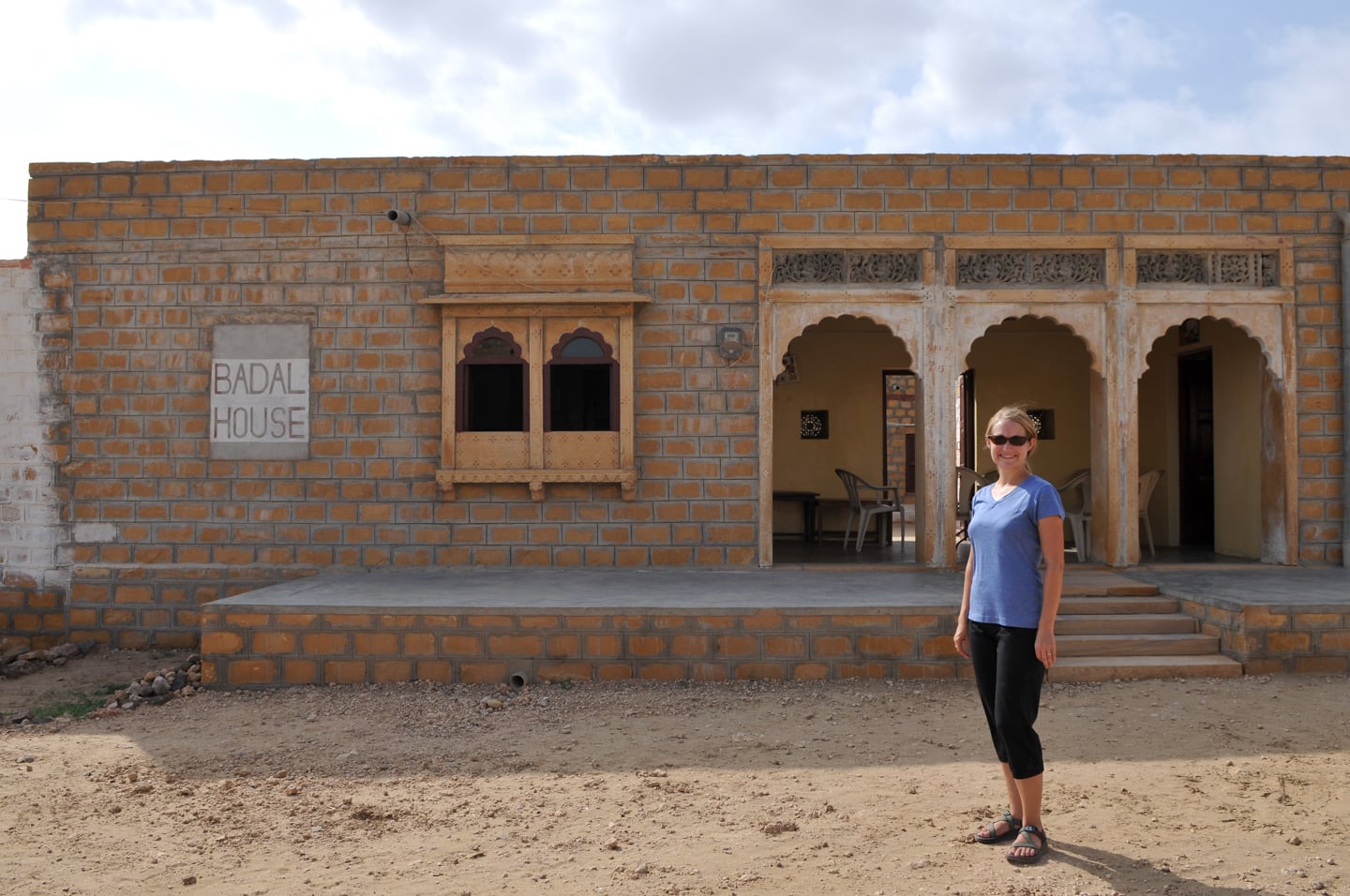
Badal House
Our highlight in Khuri village was our stay at Badal House with the legendary Badal Singh and family. Incredibly gracious, hospitable and just an all around wonderful dude, Badal’s been welcoming travelers to his family compound for years. He doesn’t believe in advertising (people just basically have to find him) and didn’t even have a sign until very recently (at the repeated request of his guests). In fact it was a guest who made the sign for him. Also very recently, another guest gave him the phone he uses to communicate with the outside world. Lonely Planet’s people got wind of Mr. Badal and listed him in the latest India edition, but with the wrong phone number unfortunately — but that didn’t seem to phase Badal in the least. First and foremost, Mr. Badal raises male goats, and has since he was a child. He loves his work and his village. He loathes the city (Jaisalmer) and has no ambitions of traveling (doesn’t care for it much at all). In a way, he says he feels like he’s been all over the world from talking to the hundreds of travelers who have stayed with his family. But don’t underestimate Badal just because he’s spent most of his life in a small desert village raising goats — he’s far more wise, worldly and intelligent than he initially lets on and can talk with authority on a range of subjects.
Unfortunately, Lonely Planet and other guides list a contact number for Badal House that is no longer current. If you want to get in touch with Badal Singh, he’s got a new number:
Badal House contact phone number: +91 8107 339097
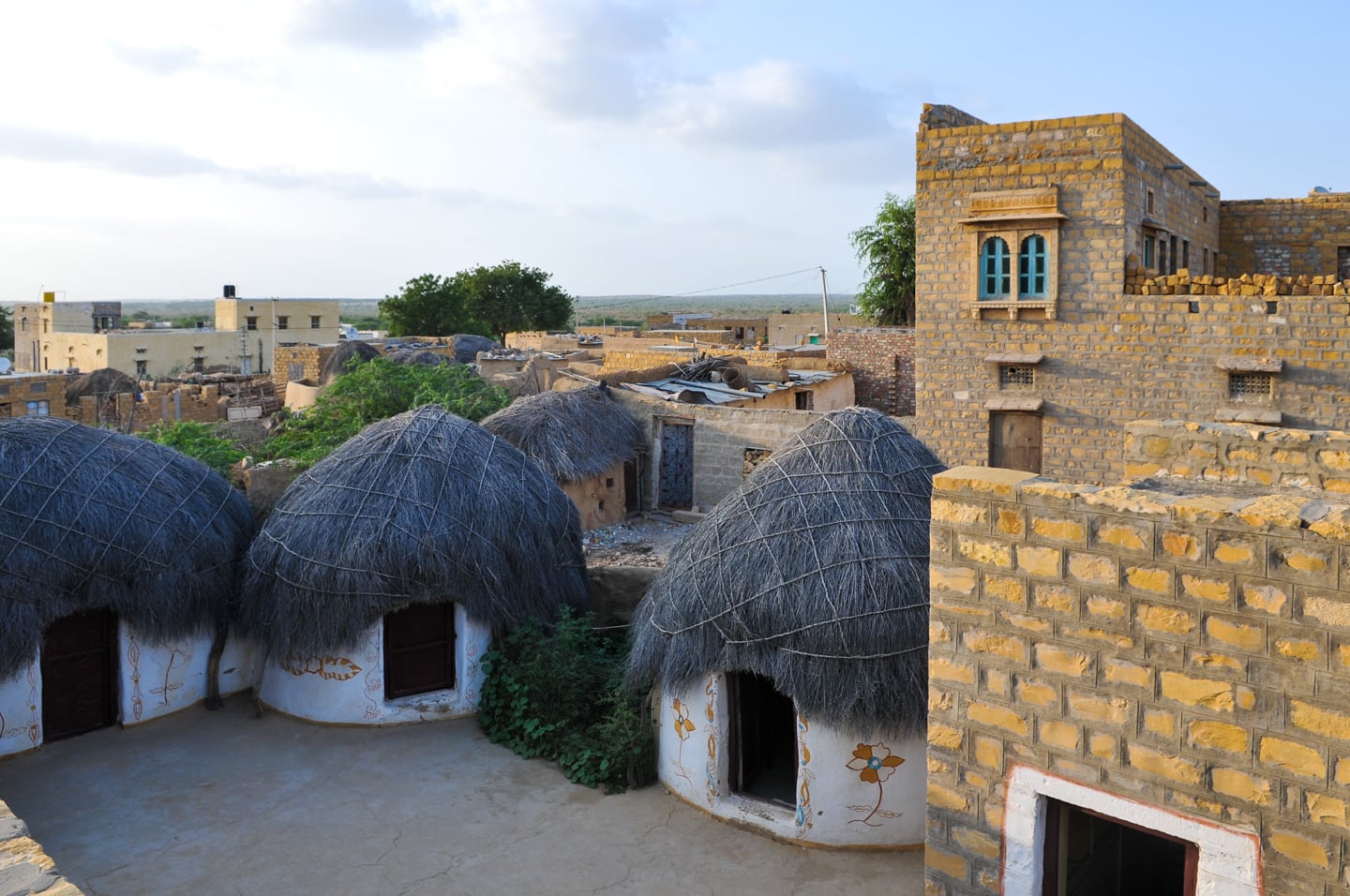
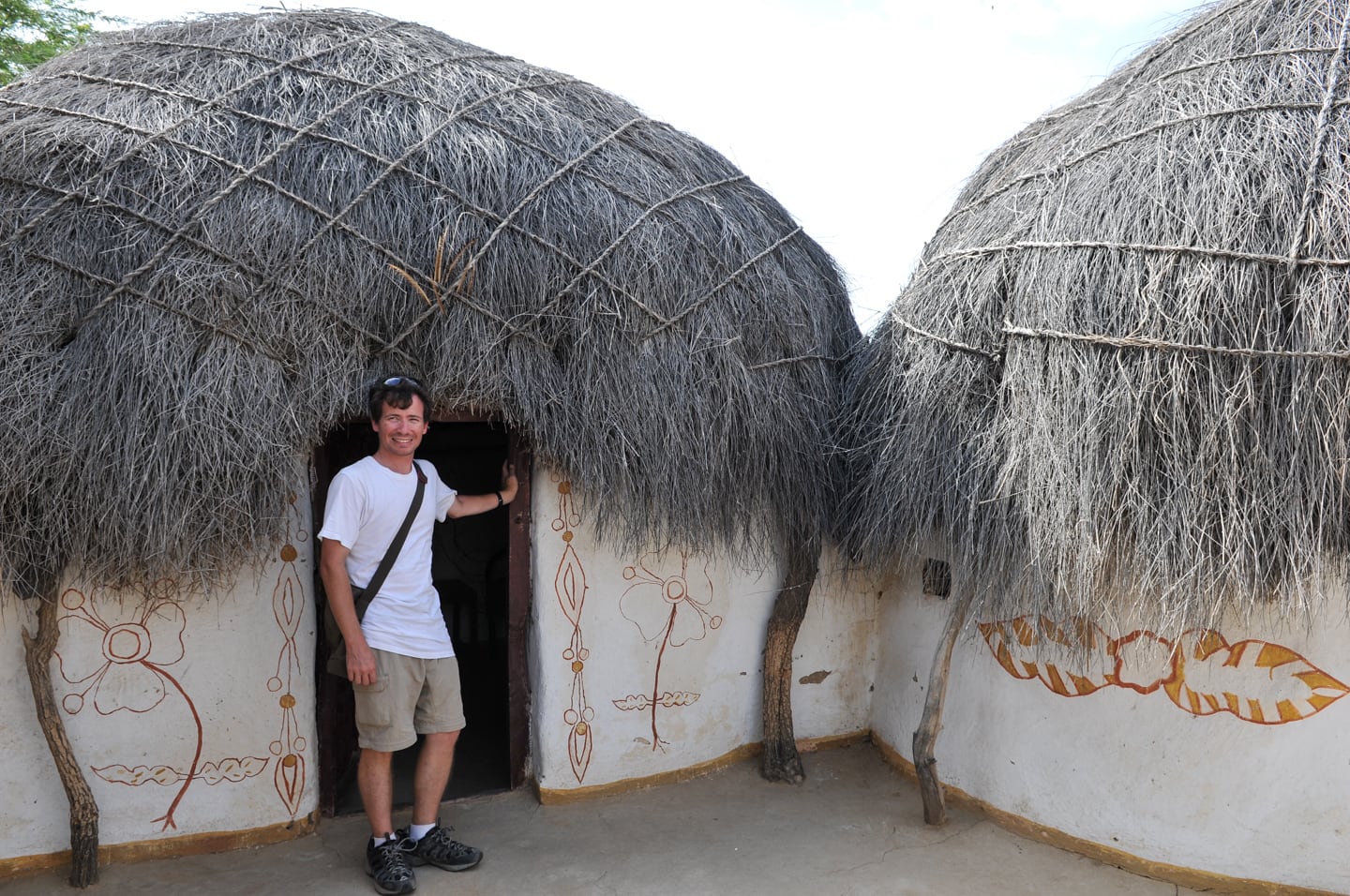
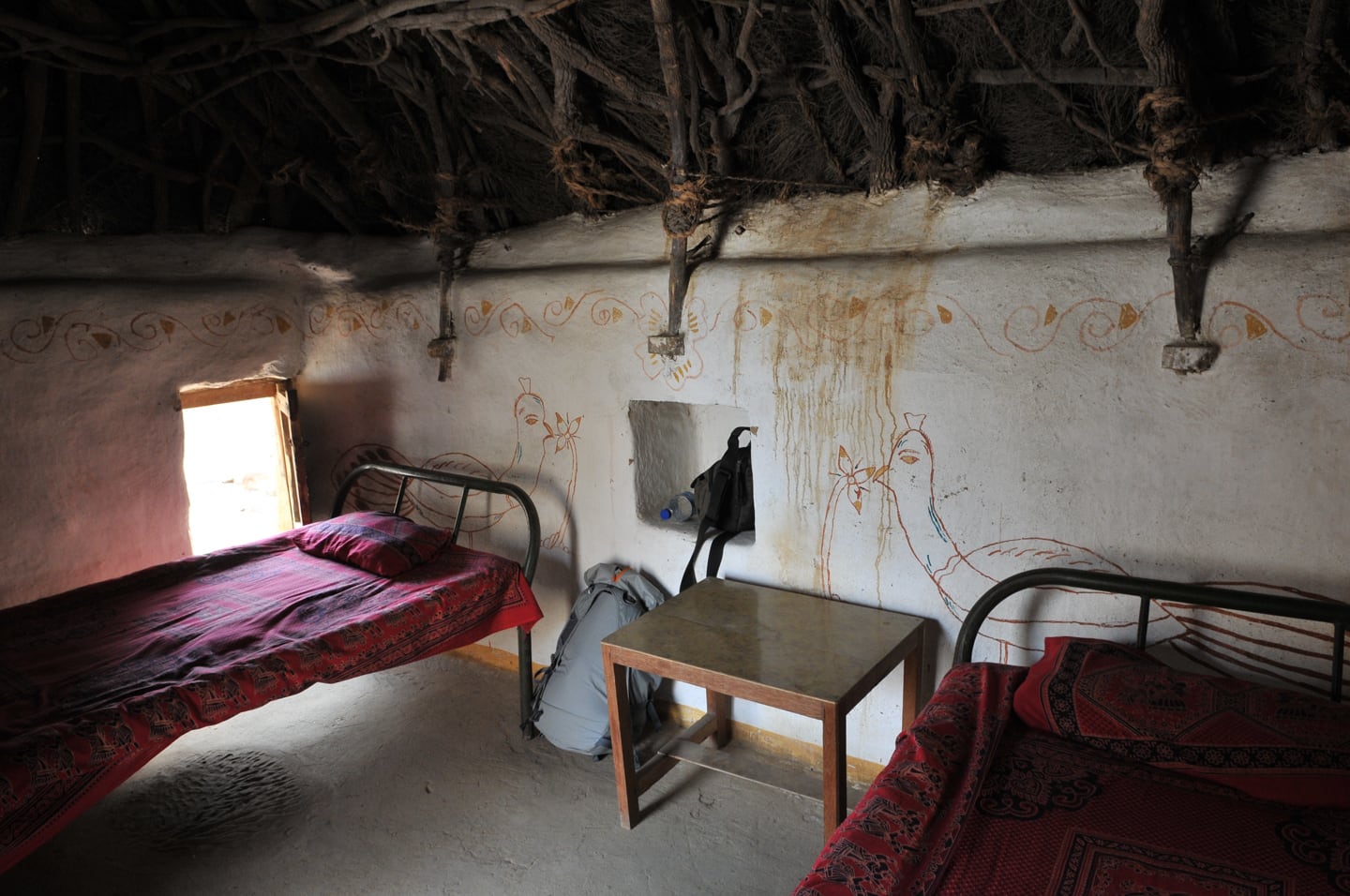

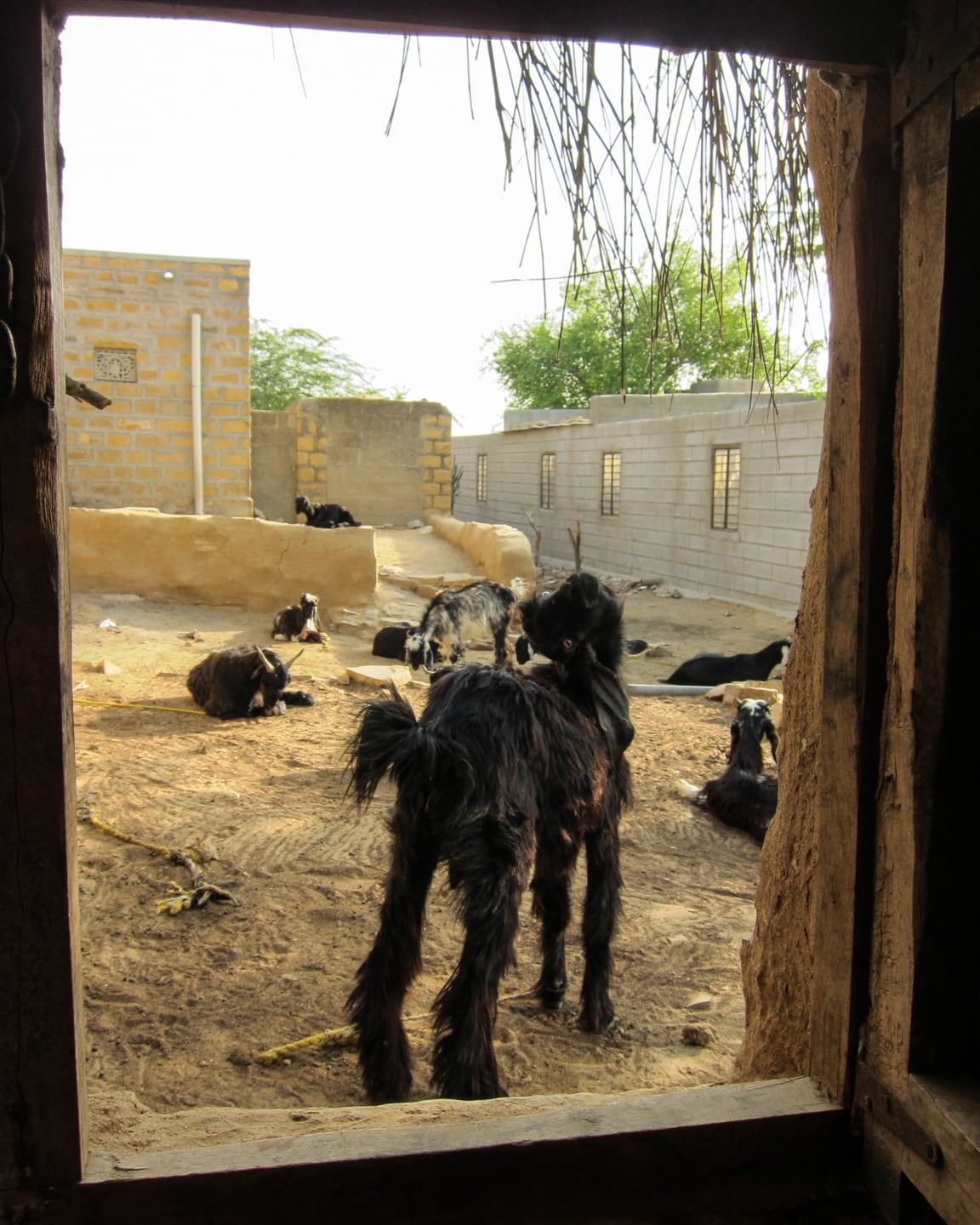
Khuri village is an oasis in the Thar Desert, and Badal House is an oasis within an oasis. Within these walls everything outside feels irrelevant. Days — though incredibly hot — just seem to roll on by as you’re sitting under the whirring fan of the front portico enjoying the afternoon shade and Badal’s wife’s tasty, yet simple, Rajasthani cooking.
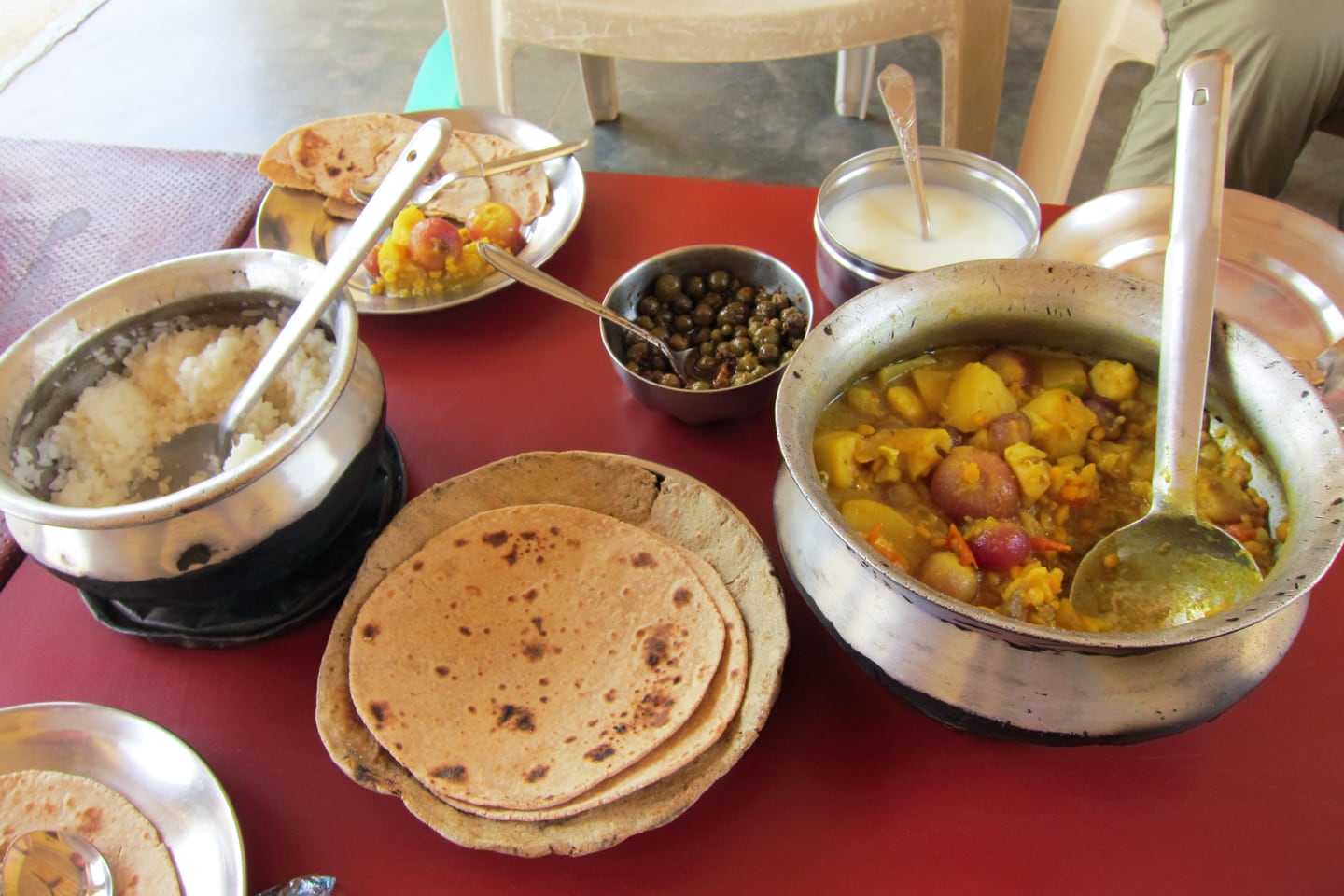
Guests have the choice of sleeping in one of two concrete rooms with windows and ceiling fan, or in one of three traditional mud huts toward the rear of the compound — which are in fact the very huts where Badal’s parents used to sleep. One of the concrete rooms has an ensuite toilet/shower, but there are two shared units not far from the huts. Upon arrival, Badal will show you his range of accommodation, but will also make it clear that on particularly warm nights you are most welcome to sleep under the stars. The family will set up a cot or a mattress in the courtyard or up on the roof. Due to the heat that night, Lori and I opted for the cot in the courtyard under some of the brightest stars we’ve ever seen.
In the late afternoon, we noticed dozens of unattended cows parading past us. Badal explained that the cows are free to roam and are very intelligent creatures. In the morning at a particular hour, they leave the protection of their caretakers property in the village and march out together to the desert. This time of year, much of the desert is awash in green grass. The cows roam several kilometers out, feed for most of the day (resting occasionally) before returning on the same path back to their respective owners by nightfall — all 100% unattended.
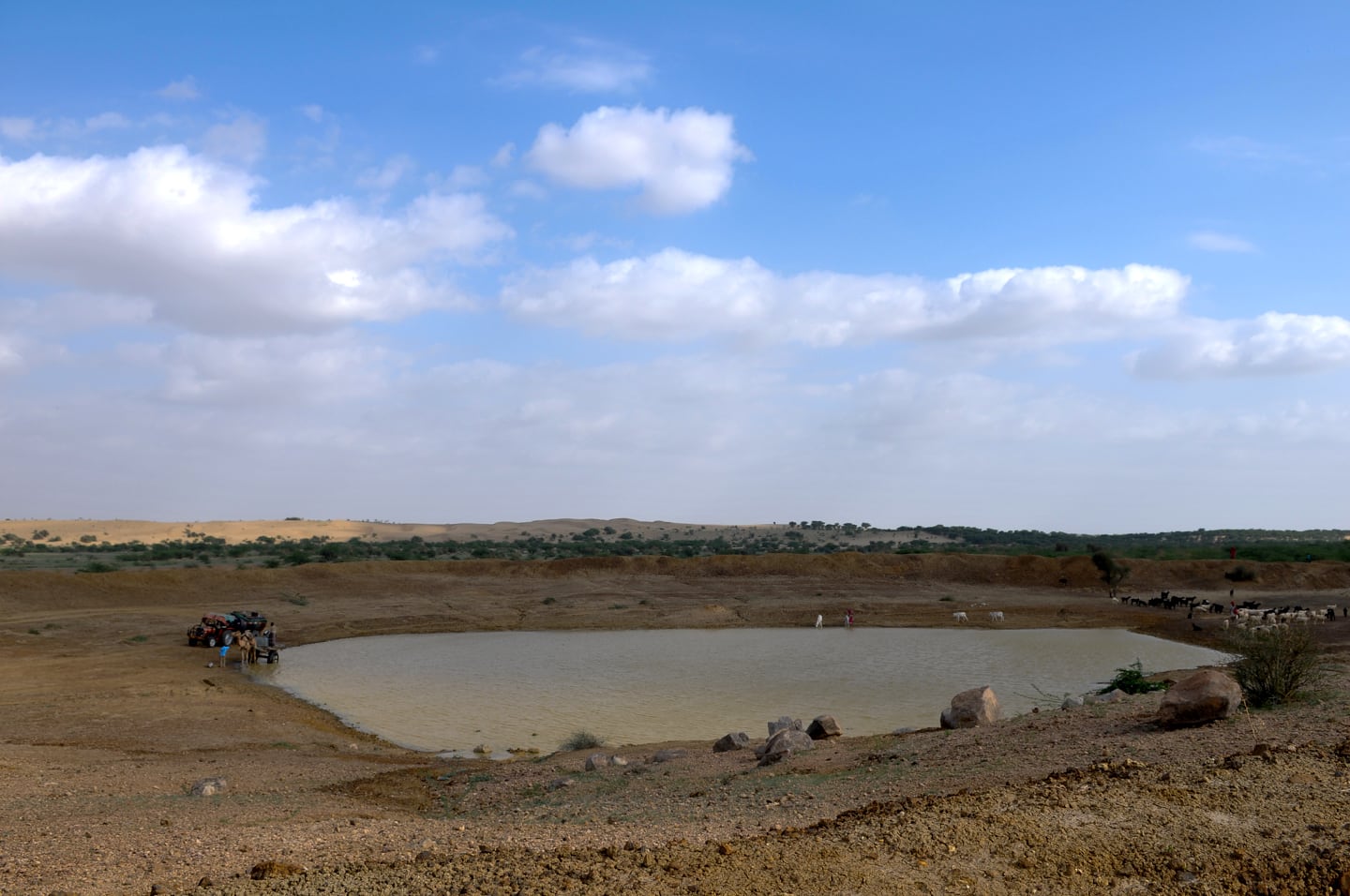
Around Khuri
Just before sunset, Lori and I took a walk into town to explore the village. There isn’t much to explore (two main roads, one paved, and a collection of snack shacks) but I can safely say it’s like no where else I’ve ever been. The town is beautiful in the evening light, low-lying cubic monochromatic structures, surrounded by expertly constructed earthen thatch-roof huts. And so many camels, everywhere. They use camels for everything, for work, for play, transport, you name it. There are very few motorized vehicles in Khuri save for an occasional Tata truck, a few motorbikes and of course, the daily bus that comes through the village.
On our way, Lori got a bad case of sweet-tooth, so we stopped by one of the snack shacks to peruse their selection. A young boy of about 8 or 9 was manning the shop. Lori found some small candies and asked how much. “10 RUPEES!” He replied. That seemed a bit much, so we thought we had heard wrong. Lori asked again. How much? Boy: “FIVE RUPEES!” Hmm, we thought. Lori: “How about three rupees?” The boy mulled this over for a moment, then replied: “No, TWO RUPEES!” SOLD! Of course we wanted to just give the kid the ten rupees (equivalent to about $0.20), but that wouldn’t have done anything but perpetuate the common belief that foreigners are nothing but a source of money, and really, the kid needed to improve his game before we were going to shell out over 5 times the value of the candy. In the end, we held him to the two rupees (which was still twice as much as the candy usually cost), but bought 10 rupees worth, which both the boy and Lori and no complaints about.
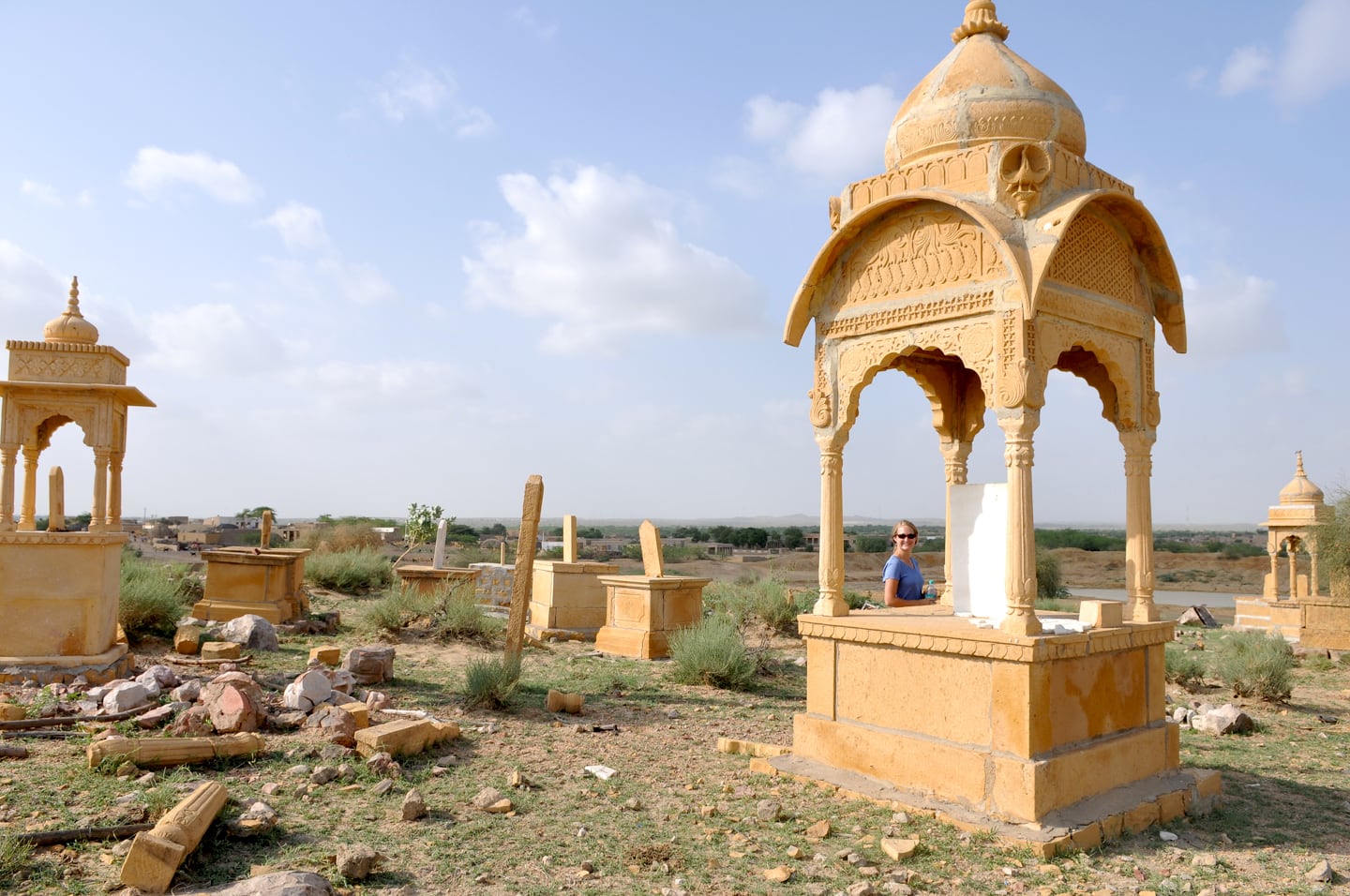
After a [very] short while, we found ourselves outside of the village on a mound littered with broken shards of pottery and small temple-like structures. At the time we thought it might be a burial ground and indeed this was confirmed later by Badal. We asked about the pieces of pots and he said that these were used to leave offerings for the deceased and left to decay.
The mound also overlooked the main reservoir for the village which fills during the short monsoon period and acts as the primary source of water for agricultural purposes for much of the village for the rest of the 10-11 months of the year. Villagers come to well with water tanks towed by various means to hall back to holding tanks in the villagers. The photo below illustrates two common transport methods.

Closer to town, a few water points from underground wells provide water for household use and filling and transporting heavy water vessels, sometimes great distances, is a central part of the villagers’ (i.e. women’s) daily routine.
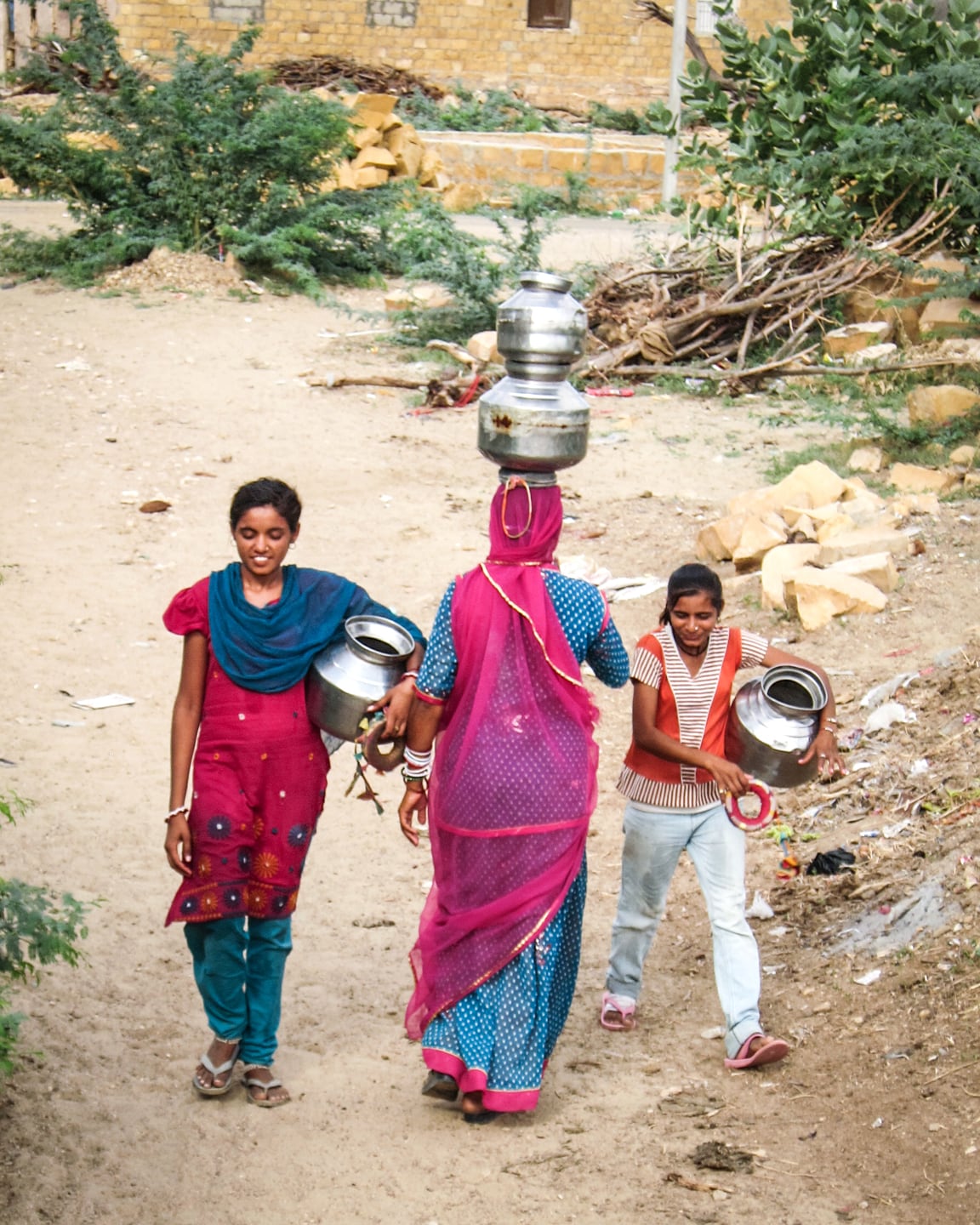
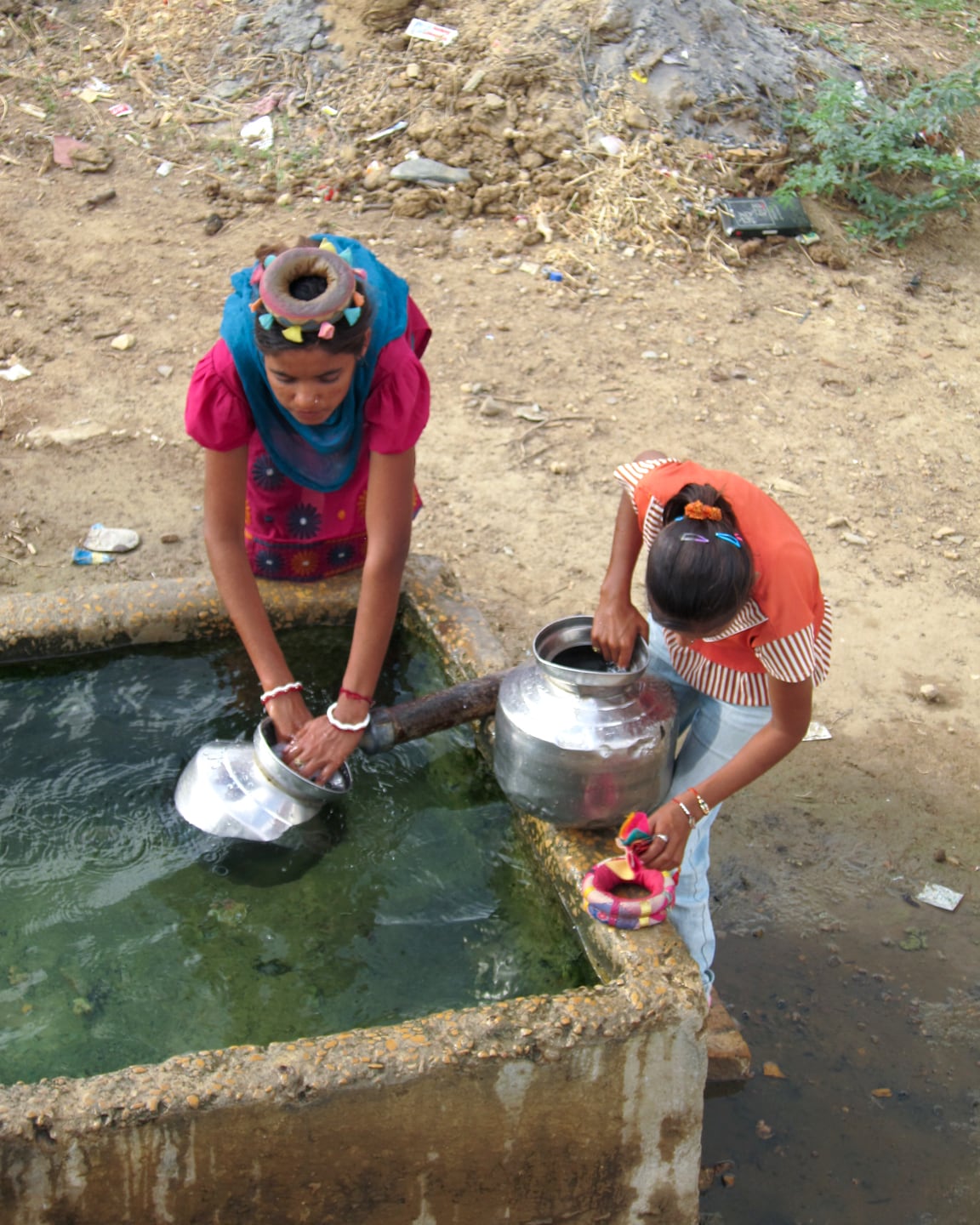
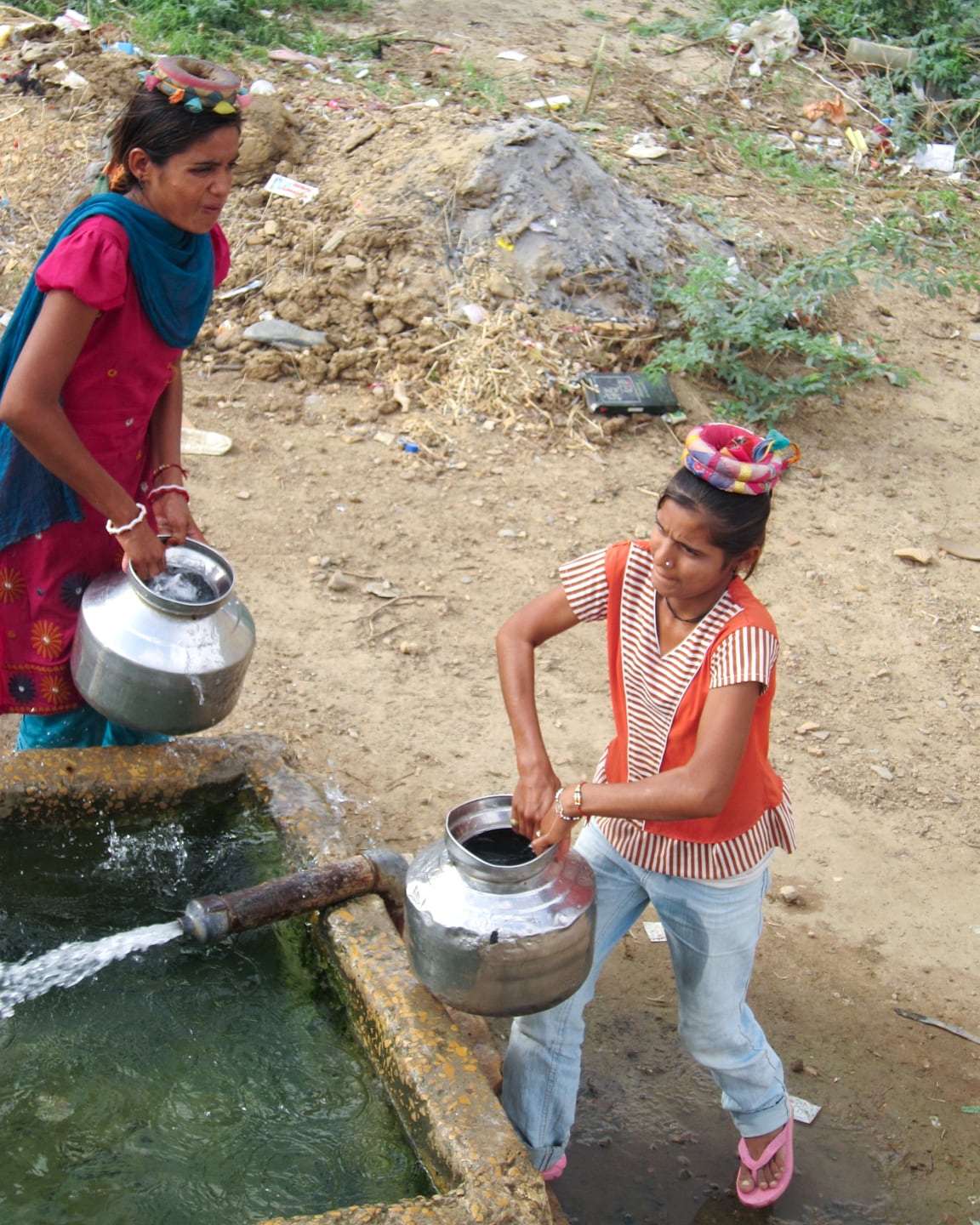
Such women may make one or several trips to and from the water source each day. Water is a scarce and highly valued commodity in the Thar desert and as a result, families are extremely judicious with its use and will ensure that not one drop is wasted.
While women find themselves tending to household necessities, it is primarily men who look after livestock. Due to the harsh climate of the region, raising livestock rather than agricultural production is the main livelihood here, though a small minority make their living on other activities such as transport and tourism (though the tourism industry is refreshingly underdeveloped here, which is the main draw of visiting Khuri for the desert/ camel-riding experience versus other places closer to Jaisalmer).
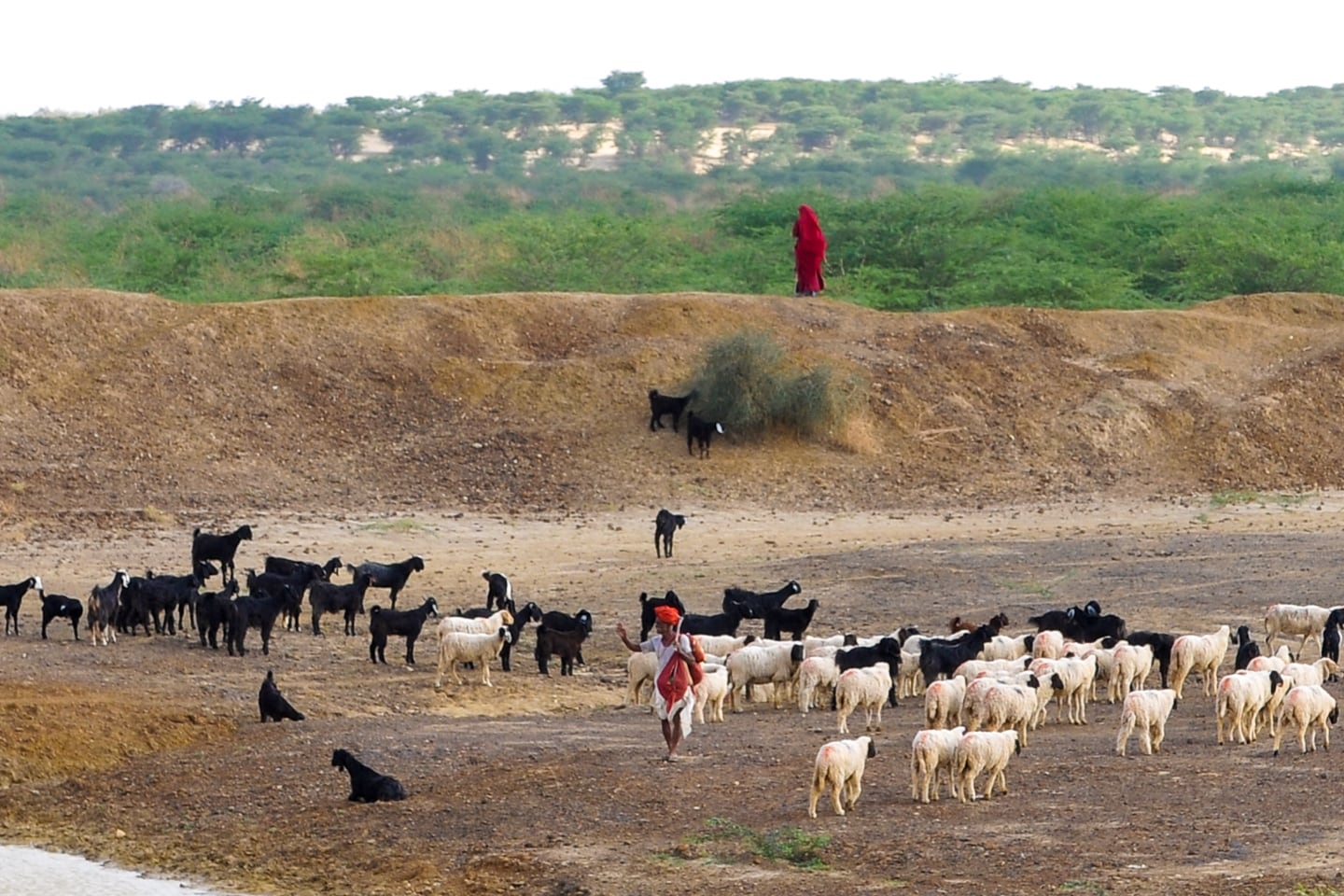
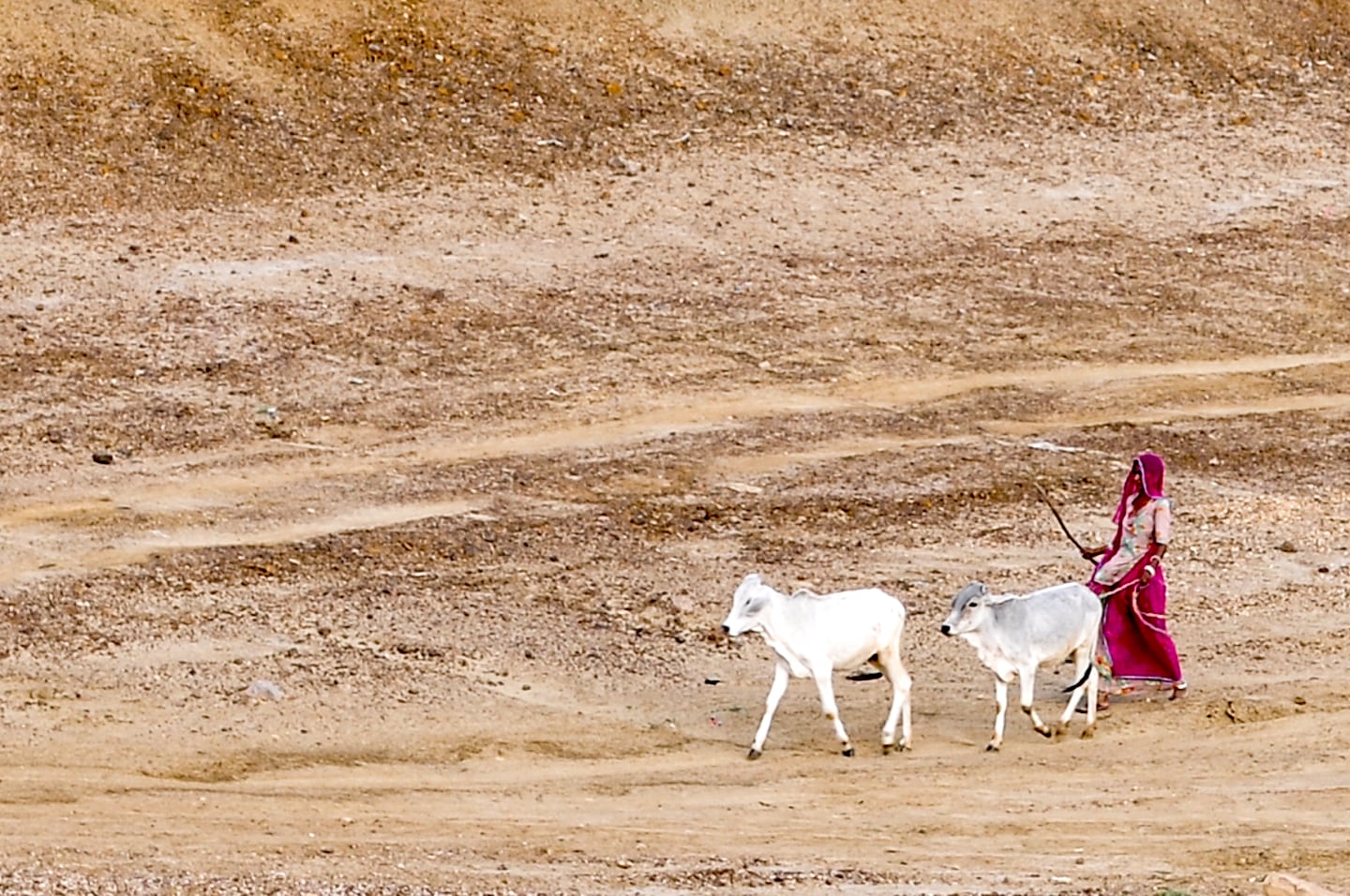
While it is our understanding that men primarily tend to the herd, women were found, unsurprisingly, to be doing a multitude of tasks beyond the family compound (such as the woman above). Each morning, we noticed that around 8am a woman would come strolling down the street with a bag to collect fresh cow dung. She would lovingly pat and flip it with her bare hands like pizza dough, then fling it into her sack — then on to the next. Like many parts of the world, cow dung is burned as fuel for cooking in Khuri.
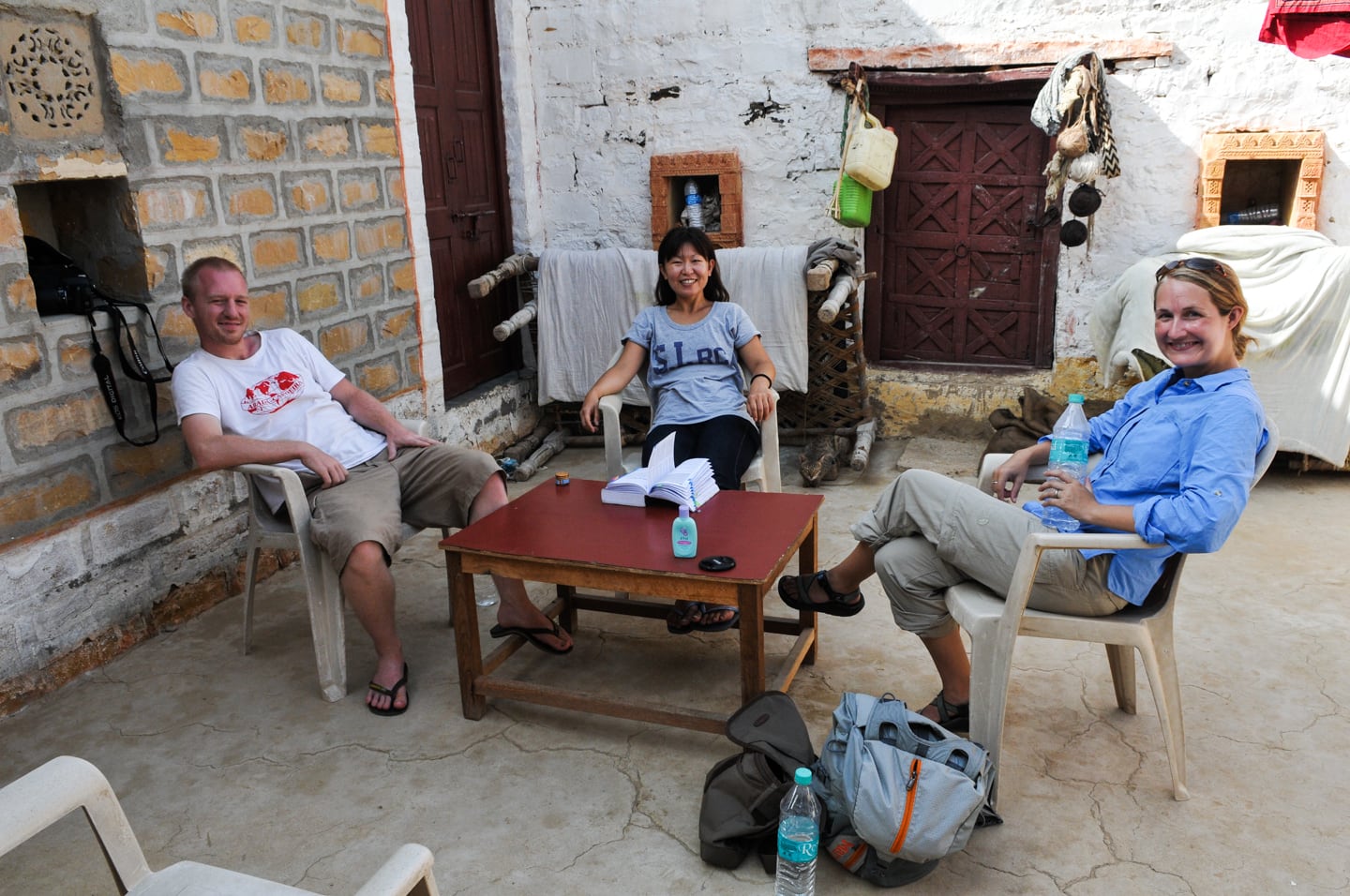
Back at Badal House
As luck would have it, we ended up on the same bus out to Khuri and staying at the same place as Doug and Akemi. In addition to be great companions during our stay in Khuri, they too were recently married, around our age and traveling long-term (for one year around the world!) They had just come from a few different countries we were headed to and were excellent sources of good advice. In fact, I’m writing this post at the very guesthouse they recommended in Siem Reap, Cambodia — Soksan Angkor Garden Guesthouse — which is fantastic for the money. They’ve also got an excellent and highly recommendable travel blog (e-shoe) which is written in both English and Japanese.

Random Vishnu painting at Badal House that we thought was particularly humorous. “No, Vishnu! Not until you’ve finished your dinner!” Oh that crazy Vishnu.
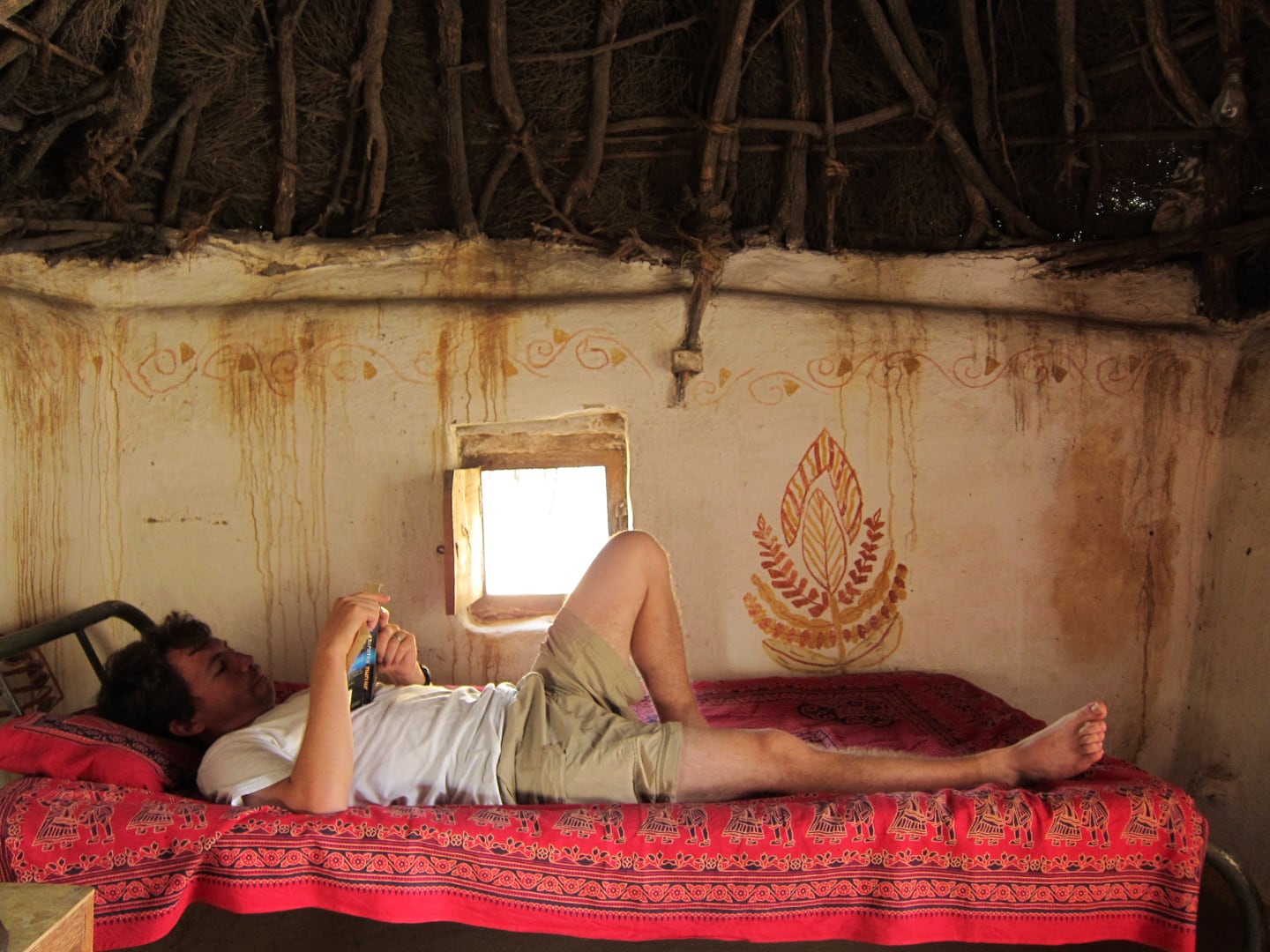
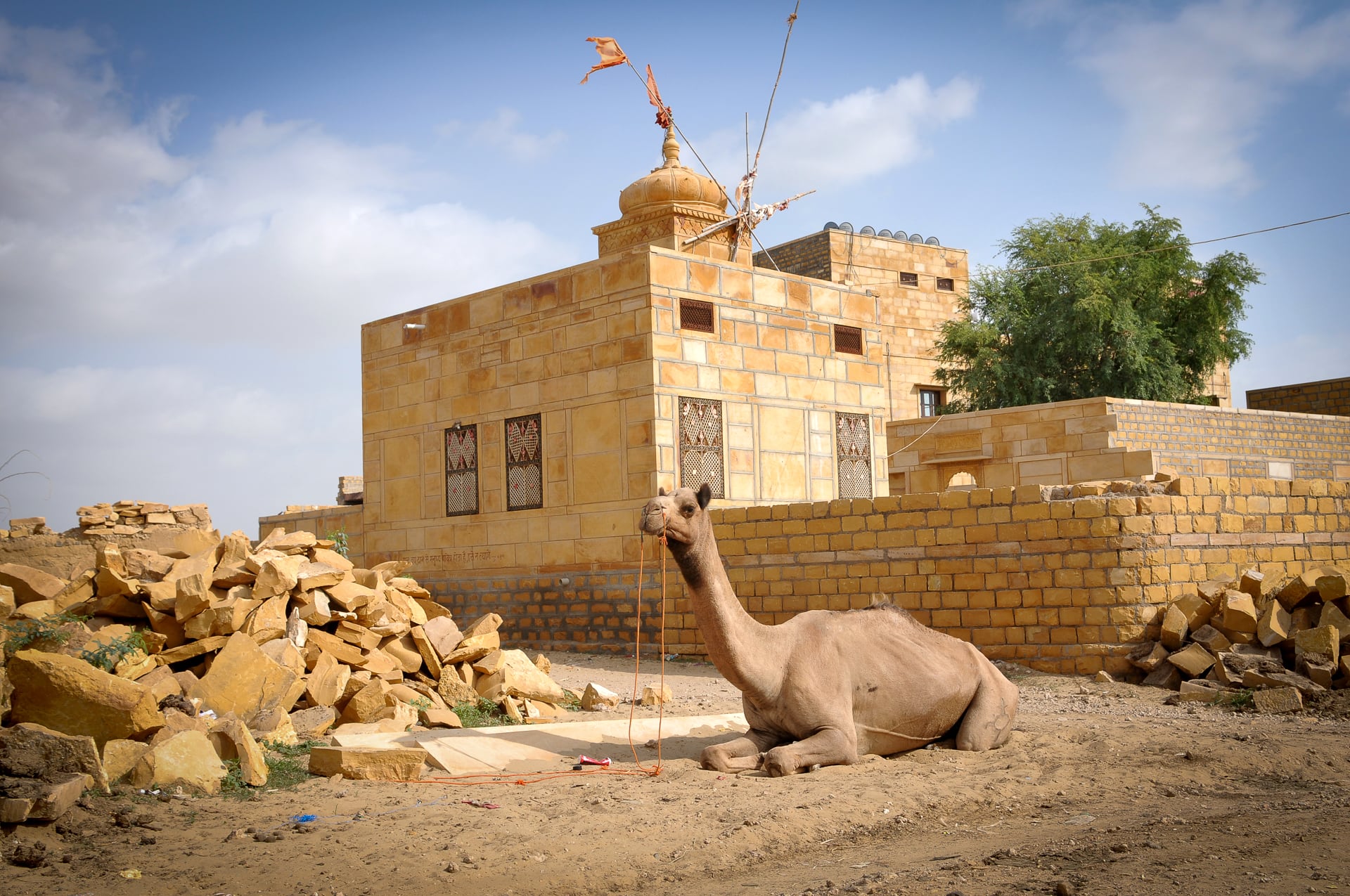
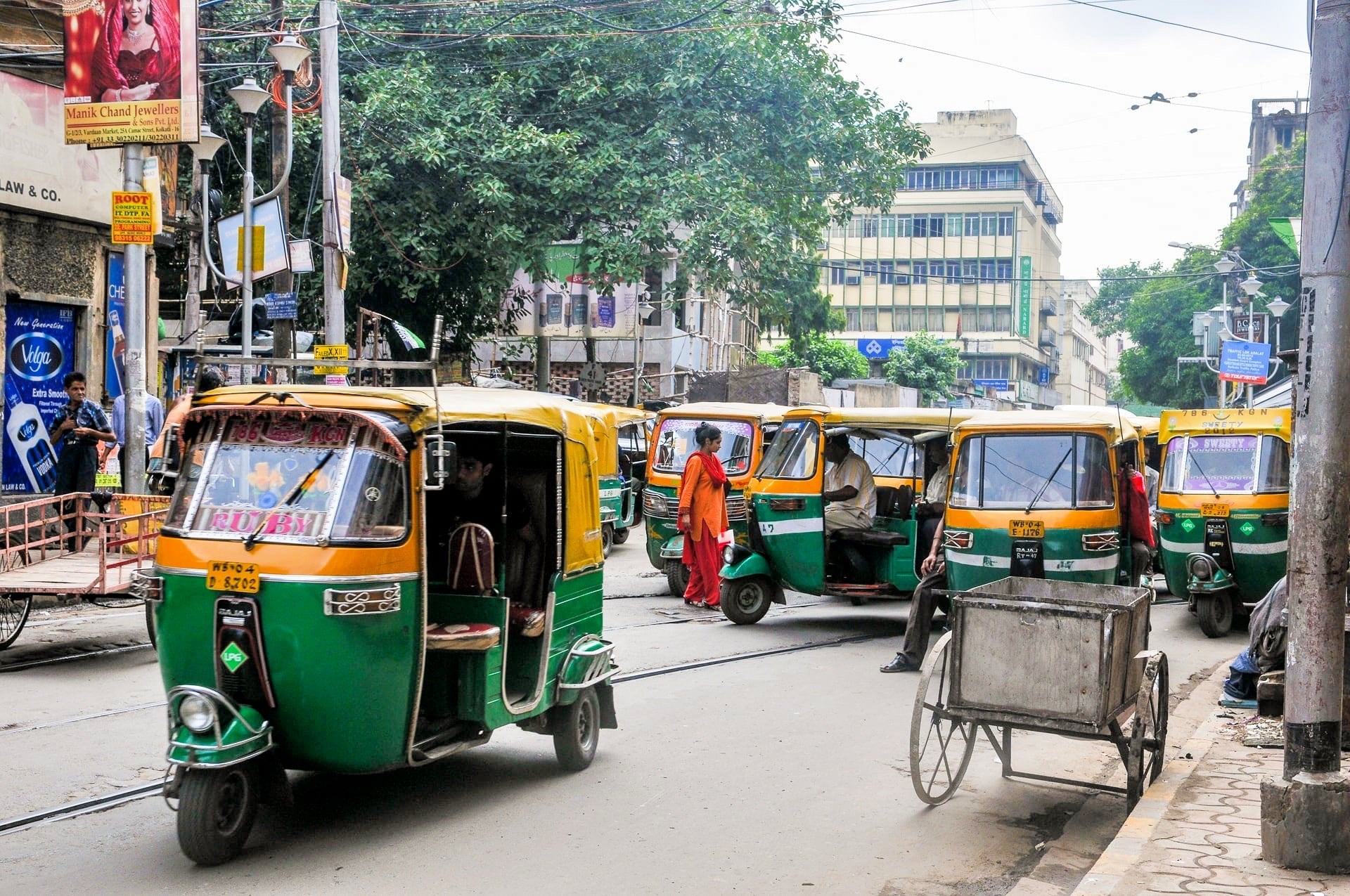
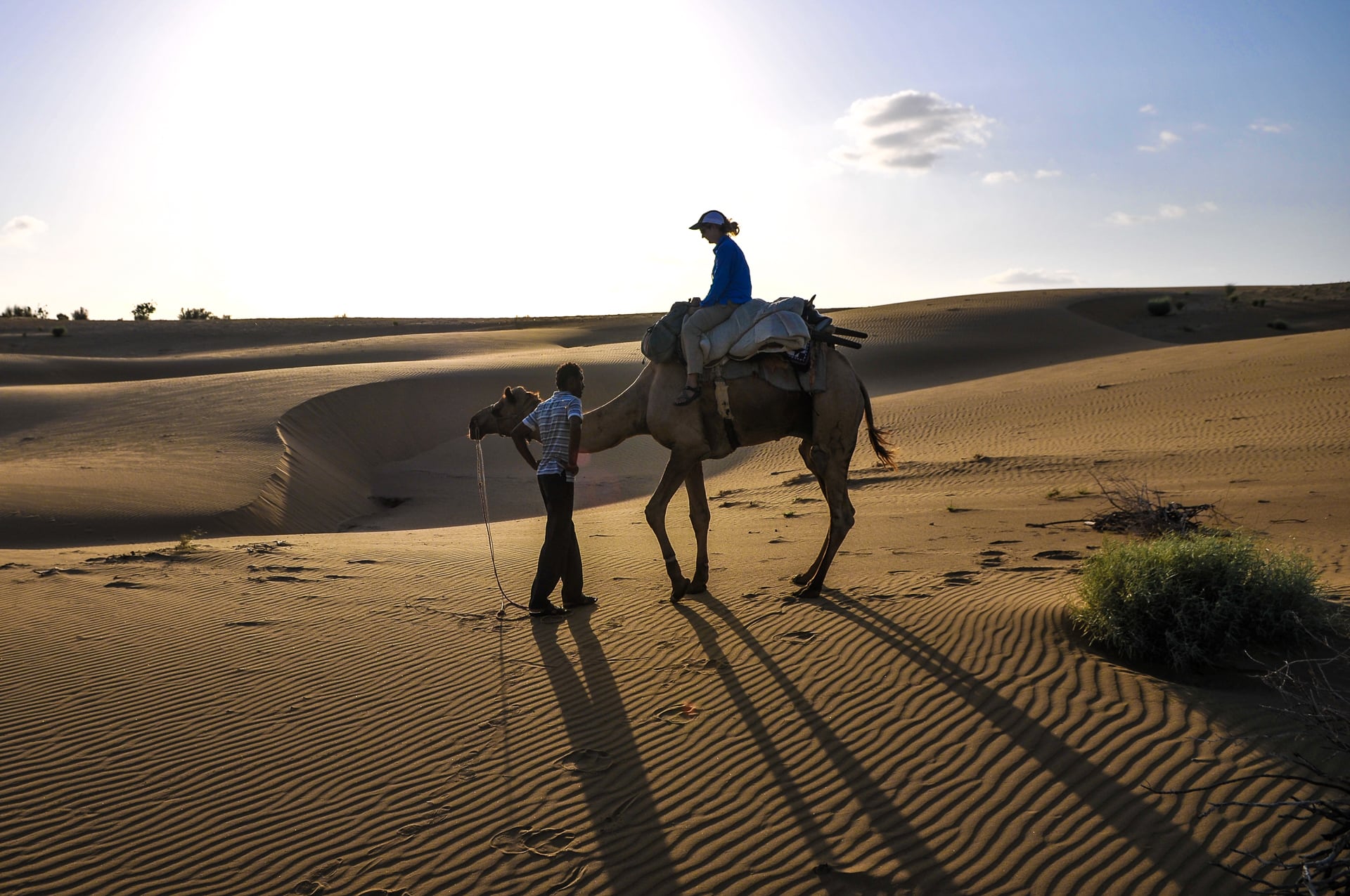
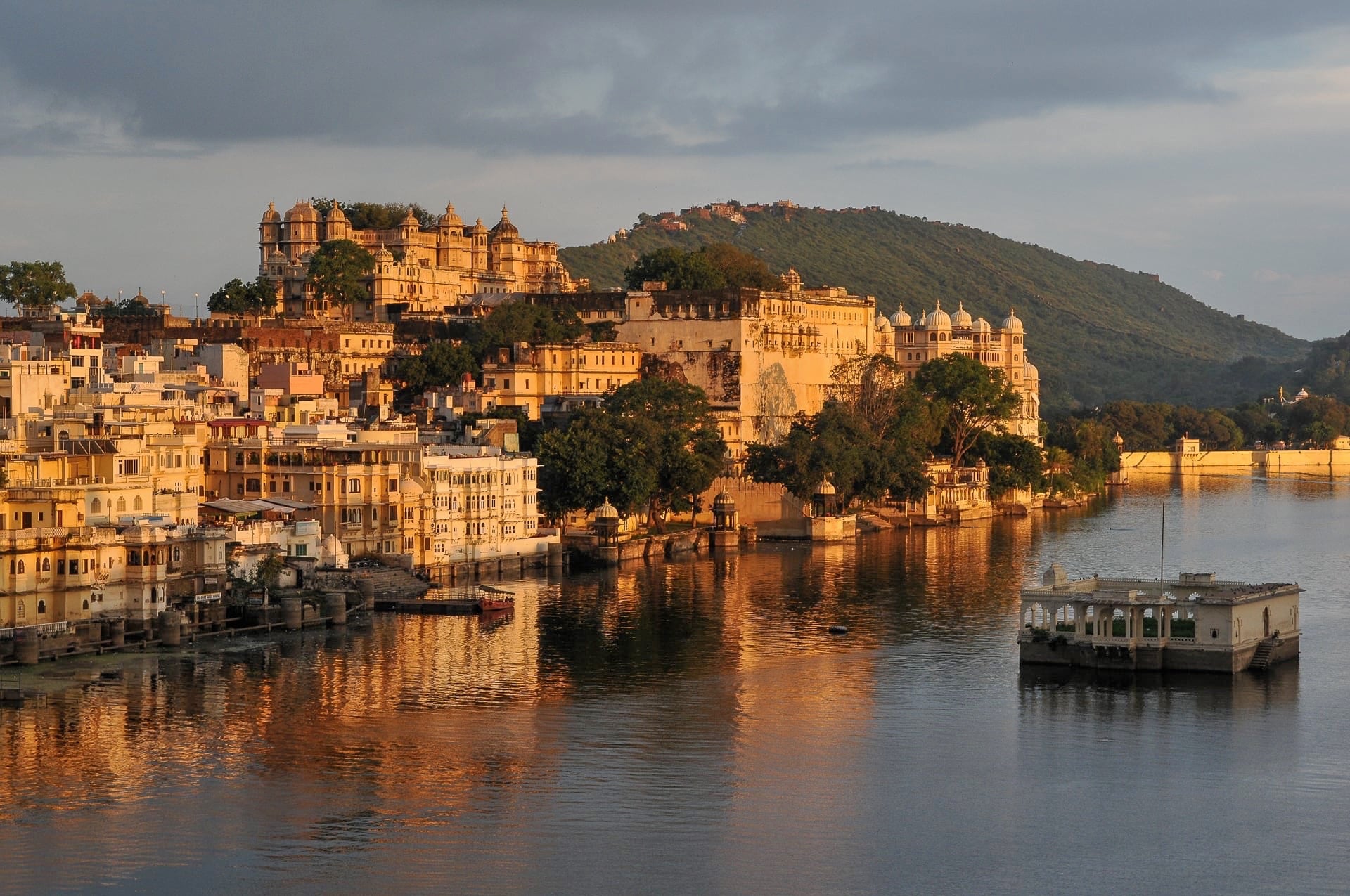
Hi Dave and Lori,
Thanks for the free press! Wow I look like crap in that picture though… meaning that it accurately portrays how I felt at the time, lol.
And glad to hear you’re enjoying our recommendation in Siem Reap. Did you guys talk to Davann? We’re closing in on Africa–maybe see you there?
Can’t wait to read about the camel rides!